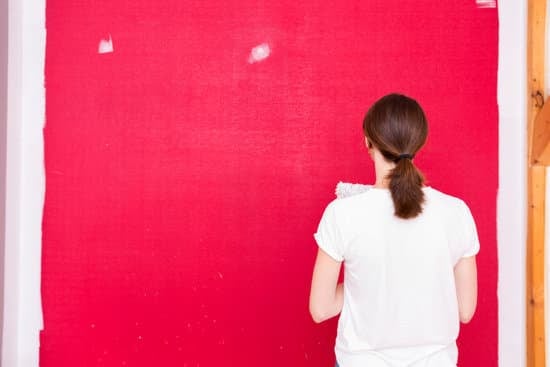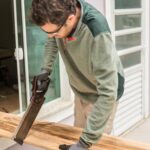Are you looking for ways on how to improve air circulation in home with no HVAC? Maintaining a healthy home environment is essential, especially for those without a heating, ventilation, and air conditioning (HVAC) system.
Proper air circulation plays a vital role in ensuring that the air quality inside the home is clean and fresh. In this article, we will discuss various methods to enhance air circulation without relying on an HVAC system, providing practical tips and techniques to create a healthier living space.
Assessing the current air circulation in your home is the first step towards improving it. By evaluating areas with stagnant air and poor ventilation, you can identify the areas that need attention. We will provide useful tips on how to conduct this assessment and what signs to look out for when determining if your home has good or poor air circulation.
In addition to assessing current air circulation, using ceiling fans and floor fans strategically can significantly enhance airflow within your home. We will dive into the benefits of using fans for improved air circulation and offer insights on where to place them effectively. Stay tuned as we explore more practical ways to optimize air circulation in homes without an HVAC system.
Assessing Current Air Circulation
Good air circulation is essential for maintaining a healthy and comfortable home environment, especially for those without an HVAC system. Assessing the current air circulation in your home is the first step toward making improvements. One way to evaluate air circulation is by checking for stagnant areas where air seems to linger and not circulate properly. These areas are often prone to mold and mildew growth due to the lack of ventilation.
Another sign of poor ventilation is if certain rooms constantly feel stuffy or have lingering odors. If you notice moisture buildup in specific areas of your home, such as bathrooms or the kitchen, this could also indicate inadequate air circulation. It’s important to take note of these signs as they can have negative impacts on indoor air quality and overall comfort.
In addition, it’s important to pay attention to any areas that may seem excessively warm or cold compared to the rest of the house. Uneven temperatures can be a sign of poor air circulation, indicating that certain areas are not getting enough airflow. By assessing these factors, you can identify problem areas and work towards improving air circulation in your home.
| Tip | Benefit |
|---|---|
| Check for stagnant areas | Prevents mold and mildew growth |
| Notice lingering odors | Indicates poor ventilation |
| Identify uneven temperatures | Sign of inadequate airflow |
Use of Ceiling Fans and Floor Fans
The use of ceiling fans and floor fans can be a simple and cost-effective way to improve air circulation in homes without HVAC systems. Ceiling fans are particularly effective in promoting air movement, especially when placed strategically throughout the home.
In rooms with high ceilings, ceiling fans can help distribute warm air that rises during colder months, while also creating a breeze to cool occupants during warmer months. Floor fans, on the other hand, can be positioned to direct airflow towards specific areas or used to create cross ventilation when placed opposite an open window.
When using ceiling fans, it is important to ensure that they are set at the right speed and direction to achieve optimal air circulation. During warmer months, ceiling fans should operate counterclockwise to create a cooling effect by pushing air downwards.
In contrast, during colder months, setting the fan in a clockwise direction at a low speed can help redistribute warm air trapped near the ceiling. Placing floor fans in corners of rooms or near windows can also enhance airflow and encourage better ventilation.
It’s worth mentioning that investing in energy-efficient ceiling and floor fans can also result in long-term savings on electricity bills. According to Energy Star, using high-efficiency ceiling fans and properly setting their direction and speed can save homeowners up to 15% on cooling costs during warmer months. Additionally, using floor fans strategically instead of relying solely on air conditioning can lead to significant energy savings over time.
| Ceiling Fans | Floor Fans |
|---|---|
| Circulate warm air during colder months | Enhance airflow |
| Create cooling effect during warmer months | Encourage better ventilation |
| Operate counterclockwise for cooling effect | Effective when placed near windows |
Open Windows and Doors
Improving air circulation in your home is essential for maintaining a healthy and comfortable living environment, especially for those without an HVAC system. Without proper ventilation, homes can become musty, humid, and uncomfortable. Here are some tips on how to improve air circulation in your home without relying on an HVAC system.
- Opening windows and doors is one of the most effective ways to allow fresh air to enter your home. This simple solution can make a significant difference in air quality and overall comfort.
- Cross ventilation is another key aspect of improving air circulation. By strategically opening windows on opposite sides of the room or house, you can create a natural airflow that helps remove stale air and bring in fresh air from outside.
- It’s important to pay attention to the direction of the wind when opening windows and doors to maximize cross ventilation. Additionally, using window screens can help prevent pests from entering while still allowing for airflow.
In addition to opening windows and doors, utilizing other methods such as ceiling fans, floor fans, exhaust fans, and natural ventilation techniques can further enhance the overall air quality and circulation in your home. By being mindful of these techniques and incorporating them into your daily routine, you can create a healthier and more comfortable living space without the need for an HVAC system.
Use of Exhaust Fans
Exhaust fans play a crucial role in maintaining good air quality and circulation in homes without an HVAC system. These fans are particularly useful in areas like the kitchen and bathroom, where odors and moisture tend to accumulate. By effectively removing stale air, odors, and moisture, exhaust fans can significantly improve the overall air circulation within these specific areas of the home.
Benefits of Exhaust Fans
One of the main benefits of exhaust fans is their ability to eliminate excess moisture from the air. In areas like the bathroom, where steam from showers or baths can lead to mold and mildew growth, exhaust fans can help prevent these issues by removing moist air from the space. Additionally, in the kitchen, where cooking activities can generate odors and airborne particles, exhaust fans can quickly remove these elements from the air, ensuring a fresher environment.
Proper Usage and Maintenance
To ensure that exhaust fans remain effective in improving air circulation, it is important to use them properly and perform regular maintenance. This includes running them during and after activities that generate excessive humidity or odors, such as cooking or showering. Additionally, cleaning or replacing the fan filters as needed will help maintain optimal performance. Proper usage and maintenance will not only enhance air circulation but also contribute to a healthier indoor environment.
Considerations for Different Areas
Different areas of the home may require different types of exhaust fans based on their specific needs. For instance, bathrooms may benefit from a high-quality ventilation fan designed to handle excessive moisture levels, while kitchens may require a more powerful range hood with built-in ventilation capabilities. By selecting exhaust fans tailored to each area’s requirements, homeowners can ensure that they effectively address issues related to stale air, odors, and moisture.
Consider Natural Ventilation Techniques
When you don’t have an HVAC system, it’s essential to get creative with natural ventilation techniques to ensure optimal air circulation in your home. One effective method is the use of window vents, which can help direct airflow into the house. By strategically opening different windows throughout the home, you can create cross ventilation that allows for air to flow freely and reduce stagnation.
Trickle vents are another natural ventilation option that can be installed in window frames or doors. These small openings allow for a controlled flow of fresh air into the home while also preventing drafts and maintaining security. Similarly, vent covers can be used to regulate the amount of air entering a space, providing yet another way to enhance natural airflow without relying on mechanical systems.
In addition to using window vents, trickle vents, and vent covers, it’s important to consider the layout and design of your home when implementing these natural ventilation techniques. For example, positioning furniture and other obstacles in a way that enhances airflow or removing any barriers that block air circulation can significantly improve the effectiveness of these methods.
By being mindful of how air moves through your living spaces and making adjustments accordingly, you can maximize your home’s natural ventilation potential.
Lastly, it is important to regularly maintain these natural ventilation features by cleaning them out periodically. This could mean vacuuming dust from window vents and keeping trickle vents free from obstructions. Having clear access will keep them functioning properly and assist in maintaining good air quality within your home without employing an HVAC system.
Indoor Plants
When selecting indoor plants for improved air quality and circulation, it’s essential to consider low-maintenance options that thrive indoors. Some popular choices include snake plants, spider plants, pothos, peace lilies, and rubber trees. These plants are known for their air-purifying properties and their ability to thrive in various lighting conditions.
This makes them suitable for homeowners who may not have access to direct sunlight throughout the day. It’s important to choose plants that are suited for indoor environments so that they can thrive without requiring constant maintenance or intensive care.
Incorporating indoor plants into the home decor not only enhances the visual appeal but also contributes to better air circulation and overall well-being. By strategically placing these low-maintenance plants in different rooms of the house, homeowners without HVAC systems can take advantage of nature’s own air purifiers while creating a more inviting living space. With proper care and attention, indoor plants can continue to provide long-term benefits by enhancing air quality and circulation within the home.
Maintenance Tips
Regularly Clean and Dust
One important maintenance tip for ensuring effective air circulation in a home without HVAC is to regularly clean and dust the living spaces. Dust accumulation can restrict airflow and decrease the effectiveness of fans and natural ventilation methods. Additionally, keeping the home clean can prevent the buildup of allergens and other particles that can negatively impact air quality.
Check and Replace Filters
For homes with exhaust fans or portable air filtration systems, it is crucial to check and replace filters as needed. Clogged or dirty filters can hinder the performance of these devices, so routinely inspecting and replacing them will help maintain optimal air circulation and quality.
Inspect Window Vents and Vent Covers
If using natural ventilation techniques such as window vents or trickle vents, it is essential to inspect them periodically to ensure they are free from debris or blockages. Similarly, vent covers should be cleaned to prevent obstruction of airflow. Keeping these vents and covers clear will help maximize their effectiveness in improving air circulation within the home.
By staying proactive with these maintenance tips, homeowners without HVAC systems can ensure that their chosen methods for improving air circulation remain effective in the long run. Regular cleaning, filter replacement, and inspection of ventilation components are all essential for maintaining a healthy indoor environment without relying on traditional heating and cooling systems.
Conclusion
In conclusion, it is essential for homeowners without a HVAC system to prioritize and take action to improve air circulation in their living spaces. Assessing the current air circulation in the home is the first step, and from there, implementing various methods such as using ceiling fans and floor fans, opening windows and doors, utilizing exhaust fans, considering natural ventilation techniques, incorporating indoor plants, and following maintenance tips can make a significant difference.
By strategically placing fans throughout the home, opening windows and doors to allow fresh air in, and leveraging natural ventilation techniques, homeowners can create a healthier indoor environment without relying on HVAC. Additionally, indoor plants can serve as a natural way to improve air quality and circulation. It is crucial for readers to implement these suggested tips to ensure that their homes are well-ventilated and comfortable.
It’s important to remember that with some effort and attention to detail, it is possible to achieve effective air circulation in homes without an HVAC system. By taking proactive steps to improve air quality through these alternative methods, homeowners can create a more comfortable living environment for themselves and their families. So let’s take these suggestions into consideration and make improvements today.
Frequently Asked Questions
How Do You Circulate Air Without HVAC?
Circulating air without HVAC can be achieved through natural ventilation methods such as opening windows and using fans. Cross-ventilation, where you open windows on opposite sides of a room or house, can help to create a flow of cool air.
Additionally, using ceiling fans or portable fans can also help to circulate the air and create a cooling effect in the absence of HVAC.
How Can I Cool My House Without HVAC?
Cooling your house without HVAC can be done by utilizing techniques such as shading windows and using natural ventilation. You can block out direct sunlight with blinds or curtains during the hottest parts of the day and open windows at night to let in cooler air.
Adding insulation to your home and using fans strategically can also help to keep the indoor temperature down without relying on traditional air conditioning.
How Do I Get Cool Air to Circulate in My House?
To get cool air to circulate in your house without HVAC, you can utilize a combination of methods such as opening windows strategically, using fans, and creating cross-ventilation. By opening windows on different sides of your home, you can encourage airflow.
Placing fans near these open windows will help to draw in cooler outside air and distribute it throughout the house effectively. Additionally, sealing off any leaks in doors and windows will keep the cool air from escaping and improve circulation within the home.

I’m thrilled to have you here as a part of the Remodeling Top community. This is where my journey as an architect and remodeling enthusiast intersects with your passion for transforming houses into dream homes.





